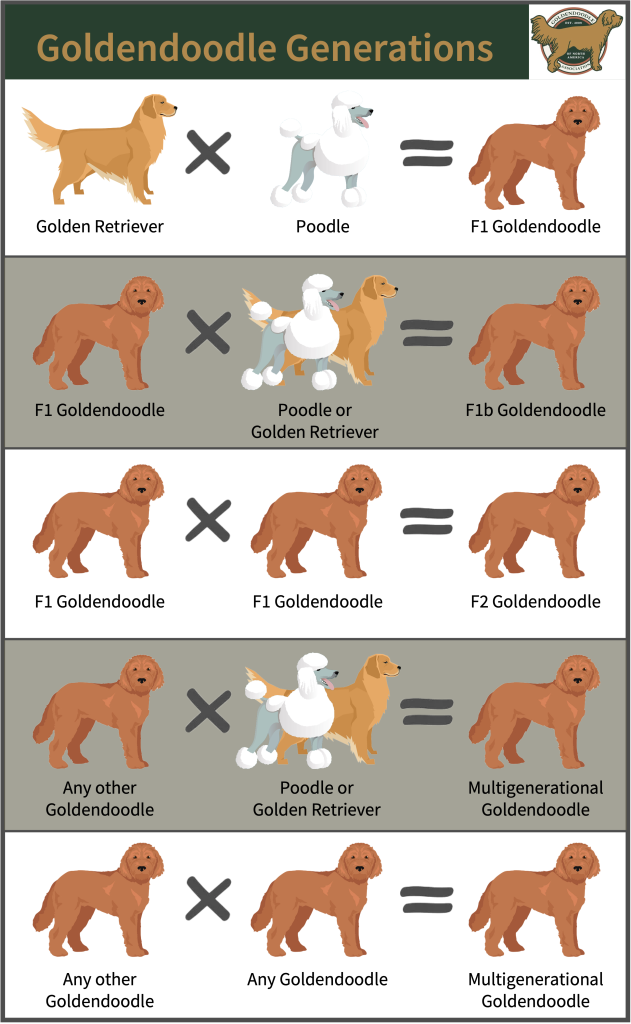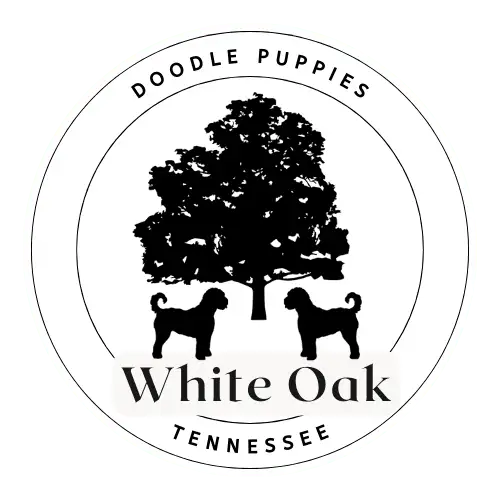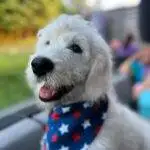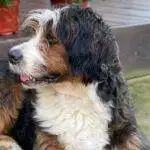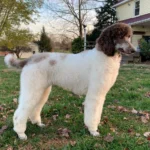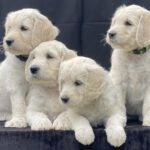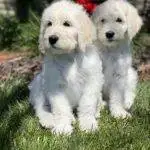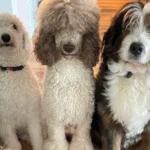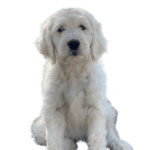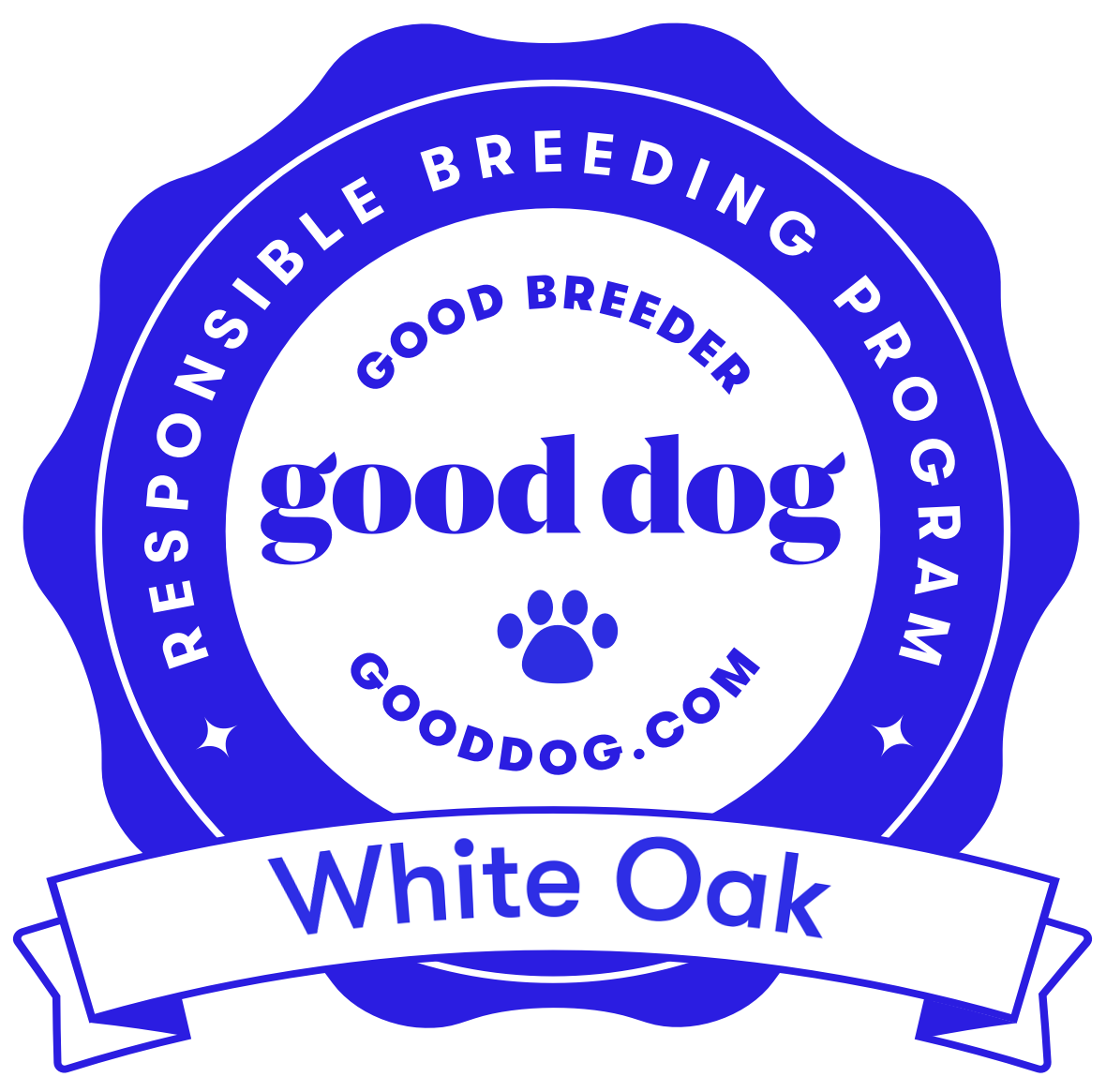Understanding the Differences Between F1 – F1b Goldendoodles
When it comes to Goldendoodles, not all are created equal! While they all share that adorable, fluffy “teddy bear” look, their genetic makeup can vary significantly depending on their generation. This guide will help you understand the distinctions between F1, F1B, F2, and multigen Goldendoodles, so you can choose the right one for you.
What is a Multigenerational Goldendoodle?
Goldendoodles are a crossbreed that combines a purebred Golden Retriever with a Poodle. The different generations of Goldendoodles—F1, F1B, F2, and multigen—each have unique characteristics based on their lineage. Here’s a breakdown of what each generation entails:
F1 Goldendoodle
The F1 Goldendoodle is the first generation, resulting from a direct cross between a Golden Retriever and a Poodle. These dogs are known for their friendly nature and make excellent family pets, especially for first-time dog owners. Here are some key traits of F1 Goldendoodles:
- Genetics: 50% Golden Retriever and 50% Poodle
- Coat Type: Mostly wavy, thanks to inheriting one curl gene from the Poodle. Their coat is generally softer and easier to manage.
- Shedding: F1 Goldendoodles shed less than Golden Retrievers, but are not guaranteed to be completely non-shedding.
- Size Variations: F1 Goldendoodles come in various sizes, including mini sizes when crossed with a toy or mini Poodle.
- Overall Traits: Friendly, social, intelligent, and easy to train.
F1B Goldendoodle
The F1B Goldendoodle is a result of breeding an F1 Goldendoodle with a Poodle.
- F1B with Poodle: There’s a 50% chance that puppies will inherit two furnishing genes and a 50% chance of inheriting two curl genes. This results in a coat that can be curly and non-shedding.
- Traits: Higher likelihood of having traits similar to the Poodle parent. They are intelligent, loyal, and may be more suitable for allergy sufferers if they inherit two furnishing genes.
F1BB Goldendoodle
The F1BB Goldendoodle is a specialized generation produced by crossing an F1B Goldendoodle with a Poodle. This generation is known for its high Poodle content, making it a popular choice for those with allergies. Here are some key traits of F1BB Goldendoodles:
- Genetics: Approximately 12.5% Golden Retriever and 87.5% Poodle.
- Coat Type: Typically features a curlier coat compared to F1 and F1B Goldendoodles. The curly texture enhances its hypoallergenic properties.
- Shedding: Highly regarded for its minimal shedding, with a strong likelihood of having a completely non-shedding coat, ideal for families with moderate to severe allergies.
- Overall Traits: Allergy-friendly with a distinctive curly coat, making it a preferred choice for those seeking a low-shedding, easy-to-manage companion.
F2 Goldendoodle
The F2 Goldendoodle is the second generation, resulting from the mating of two F1 Goldendoodles. The coat and shedding traits of F2 Goldendoodles can be more variable:
- Genetics: Puppies can inherit a mix of furnishing and curl genes from both F1 parents.
- Coat Types: Coats can be straight, wavy, or curly. Shedding can vary from non-shedding to moderate to heavy, depending on the number of furnishing genes inherited.
- Traits: Greater variation in appearance compared to F1 Goldendoodles, with a mix of traits from both parent breeds. Hybrid vigor still exists, provided that the breeding practices are sound.F2B Goldendoodle: Understanding the Second Generation Backcross
F2B Goldendoodle
The F2B Goldendoodle is a second-generation backcross, created by mating an F1 Goldendoodle with an F1B Goldendoodle. This generation combines traits from both parents, resulting in a range of possible outcomes for coat types and shedding characteristics.
- Genetics: Puppies inherit a blend of furnishing and curl genes from the F1 and F1B parents. The genetic makeup of the F1B parent adds an element of variability to the coat traits of the offspring.
- Coat Types: F2B Goldendoodles can have coats that are straight, wavy, or curly. The shedding level can vary widely:
- Non-Shedding: About 25-50% chance, influenced by the F1B parent’s coat genes.
- Low to Moderate Shedding: Around 50% chance, depending on the genetic combination from both parents.
- High Shedding: A possibility of 0-25%, if the F1B parent contributes more shedding traits.
- Traits: F2B Goldendoodles exhibit greater variability in appearance compared to other generations. The potential for hybrid vigor exists, but this depends on the health and genetic diversity of the breeding parents. For families with allergies, it is crucial to work with breeders who conduct coat testing to better predict the hypoallergenic potential of the puppies.
Multigen Goldendoodles are produced by breeding Goldendoodles of various generations. Breeders aim to create a more consistent “type” with predictable traits:
- Genetics: Involves breeding beyond the F2 generation, often using F1B, F2, or other multigenerational Goldendoodles.
- Coat Types: With careful selection, multigenerational Goldendoodles can have consistent non-shedding coats and specific coat types. However, variations can still occur based on the DNA of the parents.
- Traits: They can have a higher likelihood of non-shedding coats and uniform traits if both parents carry two furnishing genes. They benefit from hybrid vigor as long as the breeding is managed with health in mind.
Understanding Goldendoodle Furnishings and Coats
Furnishing Genes: Responsible for the presence of longer hair on the face and muzzle. Golden Retrievers have none, while Poodles have two. Goldendoodles may inherit one or two furnishing genes, affecting the length and type of their coat.
Curl Genes: Determine whether the coat is curly or wavy. Golden Retrievers have none, while Poodles have two. F1 Goldendoodles generally have wavy coats, while deeper generations can vary more.
Conclusion
Choosing the right Goldendoodle involves understanding the generation and the traits it brings. Whether you’re looking for an F1, F1B, F2, or multigen Goldendoodle, each has unique characteristics influenced by its genetic makeup. Always ensure that your breeder is knowledgeable and uses DNA testing to predict the traits of the puppies accurately.
By understanding these distinctions, you can select a Goldendoodle that fits your family’s needs and preferences, ensuring a happy and healthy addition to your home!
Goldendoodle Puppies
.